
Solar panels have been gaining popularity as a sustainable energy source for various reasons.
We will explore what solar panels are, how they work, and the benefits of using them.
We will also discuss the different types of solar panels available, the factors to consider when choosing the right one, and how to install them.
We will highlight potential drawbacks to be aware of.
Discover why using solar panels is a better choice for a greener and more cost-effective energy solution.

Table of Contents
Solar panels are photovoltaic cells that convert sunlight into electricity, creating a sustainable energy system. Homeowners often install solar panels to harness renewable energy and reduce their reliance on traditional power sources.
This process of converting sunlight into electricity is achieved through the photovoltaic effect in which the panels absorb sunlight and generate direct current (DC) electricity. This electricity can then be converted into alternating current (AC) electricity which can power homes, businesses, and even entire communities.
One of the key benefits of using solar panels is that they provide a clean and renewable source of energy, reducing carbon emissions and dependence on fossil fuels. Solar panels can help homeowners save money on their electricity bills in the long run, making them a cost-effective investment in the future.
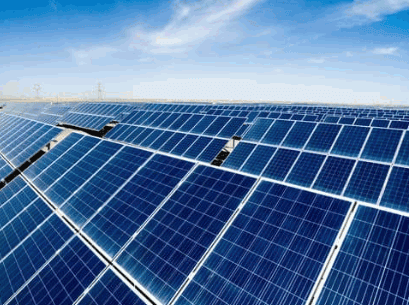
Solar panels work by utilising photovoltaic cells that absorb sunlight and convert it into electricity through innovative technology. These panels serve as sustainable power sources that can generate electricity for various applications.
The process of converting sunlight into electricity begins with the photovoltaic cells within the solar panels. These cells are made of semiconductor materials, typically silicon, that create an electric field when sunlight strikes them. The photons from the sunlight knock electrons loose from the atoms in the semiconductor, allowing them to flow through the material, creating an electrical current. This direct current (DC) is then converted into alternating current (AC) through an inverter, which makes it usable for powering homes, businesses, and other electrical devices. The advancements in solar technology have significantly increased the efficiency of this process, making solar energy an increasingly viable and cost-effective source of renewable power.
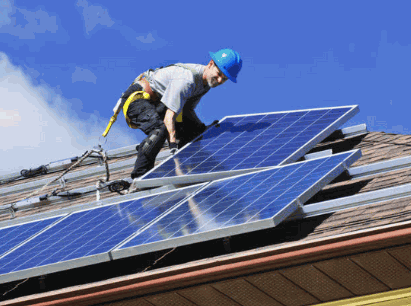
Using solar panels offers numerous benefits such as cost savings on electricity, reduced environmental impact by decreasing carbon emissions, and increased home values for homeowners embracing renewable energy.
One of the significant advantages of solar panels is the potential for substantial energy savings. By utilising the strength of the sun, homeowners can significantly reduce their reliance on traditional energy sources, leading to lower electricity bills over time. This not only provides financial benefits but also promotes sustainable living practices.
Solar panels play a crucial role in fostering environmental benefits. The utilization of solar energy helps in reducing carbon emissions, which are known to contribute to climate change. By opting for solar power, homeowners can actively participate in the global effort to combat environmental issues and promote a cleaner, greener future.
The installation of solar panels can have a positive impact on homeowners by increasing the overall value of their property. As renewable energy solutions become increasingly desirable in real estate markets, homes equipped with solar panels are often seen as more attractive and eco-friendly, thus potentially boosting the resale value of the property.
Solar power serves as a key renewable energy source that reduces the reliance on finite resources like the global oil supply. Harnessing sunlight for electricity generation ensures a sustainable energy future.
By utilising solar panels to convert sunlight into electricity, households, and businesses can significantly decrease their carbon footprint and contribute to a cleaner environment. With advancements in solar technology, the efficiency of solar panels continues to improve, making solar energy more accessible and cost-effective. Countries that invest in solar power infrastructure not only reduce their greenhouse gas emissions but also create job opportunities in the renewable energy sector, fostering economic growth and energy independence.
Investing in solar panels can lead to significant cost savings over time by reducing electricity costs and providing homeowners with long-term savings on their energy bills. The initial investment is offset by the savings accrued from using solar energy.
One of the primary financial benefits of solar panels is the potential for substantial long-term savings that homeowners can enjoy. By utilising the strength of the sun, households can significantly reduce their reliance on traditional electricity sources, resulting in lower monthly utility bills. This not only helps in cutting down ongoing expenses but also adds value to the property, making it a smart investment choice.
Solar panels play a crucial role in reducing carbon footprints and greenhouse gas emissions by providing clean energy solutions. By utilising solar power, individuals can contribute to a healthier environment and combat climate change.
The adoption of solar energy helps decrease the reliance on fossil fuels, such as coal and oil, which are major contributors to air pollution and global warming. This shift towards renewable energy sources like solar power not only reduces harmful emissions but also decreases the demand for non-renewable resources, promoting long-term sustainability.
Solar panels require minimal maintenance once installed, making them a hassle-free energy solution for homeowners. Regular inspections and cleaning are usually sufficient to ensure the system operates efficiently.
One key advantage of solar panels is their durability and reliability. They are designed to withstand the elements and require little to no attention from homeowners on a day-to-day basis. With proper installation, these panels can last for several decades, providing a long-term and sustainable energy solution.
Simple upkeep procedures such as checking for debris or shading issues, cleaning the panels with water and a soft brush, and monitoring the system's performance regularly can help maintain optimal efficiency.
Solar panels can be installed virtually anywhere, providing homeowners with energy independence even during grid outages. This versatility makes solar power a reliable choice for generating electricity in various locations.
Solar panels function seamlessly in remote areas where traditional power sources may not be accessible, making them ideal for off-grid living situations. The ability of solar energy systems to harness sunlight and convert it into electricity offers homeowners a sense of security during grid disruptions, ensuring a continuous power supply. The flexibility of solar panels allows them to be easily integrated into existing structures without the need for extensive modifications, blending harmoniously with the aesthetics of the property.

There are various types of solar panels available, including monocrystalline, polycrystalline, and thin-film options. Each type has unique characteristics and suitability for different applications.
Monocrystalline solar panels are known for their high efficiency and longevity, making them ideal for residential and commercial installations where space is limited. Polycrystalline panels, while slightly less efficient, are more cost-effective and perform well in high-temperature conditions.
Thin-film solar panels are lightweight and flexible, making them suitable for curved or irregular surfaces. They are often used in large-scale projects or portable applications due to their ease of installation and transport.
Monocrystalline solar panels are made from high-purity silicon, offering high efficiency and a smart design. These panels are known for their durability and superior performance in converting sunlight into electricity.
One of the standout features of monocrystalline solar panels is their remarkable efficiency in converting solar energy into electricity. This means that they can generate more power in a smaller space compared to other types of solar panels. Their premium silicon construction ensures that they have a longer lifespan and can withstand various weather conditions, making them a reliable choice for long-term solar energy systems. Because of their efficiency and durability, monocrystalline solar panels are a popular choice for residential and commercial installations seeking sustainable energy solutions.
Find out more: How Big Are Monocrystalline Solar Panels
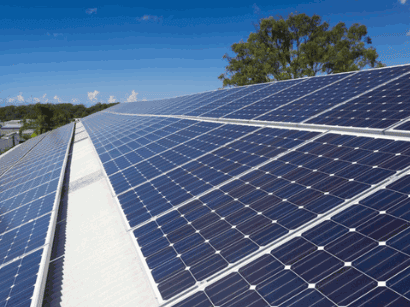
Polycrystalline solar panels are cost-effective options that provide reliable energy generation. While slightly less efficient than monocrystalline panels, polycrystalline panels offer a budget-friendly solution for solar power.
Homeowners often find the affordability of polycrystalline solar panels appealing, especially when looking to invest in renewable energy for their homes. These panels are known for their durability and ability to perform well in various lighting conditions, making them a practical choice for residential settings. With advancements in technology, the efficiency gap between polycrystalline and monocrystalline panels has significantly decreased, making them even more attractive for those seeking cost-effective yet reliable energy solutions. Along with their initial lower cost, these panels require minimal maintenance, further reducing long-term expenses for homeowners.
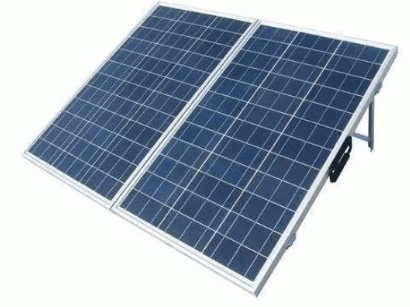
Thin-film solar panels are lightweight and flexible, making them suitable for various installation scenarios. These panels utilise innovative technology to convert sunlight into electricity efficiently.
One of the key features of thin-film solar panels is their ability to adapt to curved surfaces, unlike traditional rigid solar panels. This flexibility opens up a wide range of installation possibilities, such as on buildings with irregular shapes or vehicles with curved surfaces.
Additionally, thin-film solar panels are known for their durability even in challenging environments. They can withstand temperature variations and are less prone to damage from impact compared to their crystalline silicon counterparts.
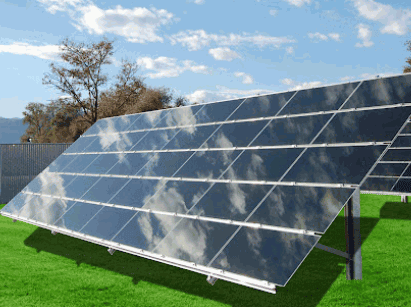
When selecting solar panels, it is essential to consider factors such as efficiency, durability, cost, and warranty coverage. These elements play a crucial role in determining the performance and longevity of the solar panel system.
Efficiency is one of the most significant factors to weigh when choosing solar panels. High efficiency ensures that the panels can convert sunlight into electricity more effectively, resulting in greater energy production. Durability is equally important as it determines how well the panels can withstand various weather conditions and potential physical damage over time. Cost-effectiveness ties into the initial investment and long-term savings that solar panels can offer.
Having a comprehensive warranty can provide peace of mind knowing that any issues with the panels will be covered. Thus, considering these factors collectively can help you make an informed decision for a reliable and efficient solar energy system.
The efficiency of solar panels refers to how well they convert sunlight into electricity using photovoltaic cells. High-efficiency panels can generate more power from the same amount of sunlight, maximising energy production.
When talking about solar power systems, efficiency stands out as a critical factor. The higher the efficiency of the solar panels, the more electricity they can produce from the sunlight they capture. This directly translates into increased energy output, making the system more productive and cost-effective.
This is where the role of photovoltaic cells comes into play, as they are the key components responsible for converting light into electricity within the solar panels. An enhancement in the efficiency of these cells significantly boosts the overall performance of the entire solar panel setup, leading to a more sustainable and efficient power generation process.
Durability is a critical factor when choosing solar panels, as they need to withstand various weather conditions and environmental factors. Ensuring the panels are weather-resistant and durable enhances their long-term performance.
Robust construction and weather resistance are crucial aspects that contribute to the longevity and efficiency of solar panels. Choosing durable panels is essential for reliable energy generation, as they will continue to produce electricity consistently over the years. Panels that are built to endure harsh weather conditions, such as heavy rain, snow, or extreme heat, are more likely to maintain their efficiency and structural integrity. High-quality materials and sturdy design play a key role in minimising maintenance costs and ensuring a dependable solar energy system.
The cost of solar panels includes the initial investment and potential financing options available to homeowners. Evaluating the upfront costs and financing plans can help determine the most cost-effective solution for installing solar panels.
When considering the financial aspects of solar panel selection, it's essential to look beyond the initial purchase price. Homeowners need to factor in installation costs, maintenance expenses, and potential savings on electricity bills over the system's lifespan. By weighing these aspects, individuals can gain a comprehensive understanding of the total cost of ownership associated with solar panels.
Along with upfront costs, financing plays a crucial role in making solar energy more accessible. Homeowners can explore various financing options, such as solar loans, leases, power purchase agreements, or incentives and rebates offered by local governments or utilities. These financing mechanisms can help distribute the initial investment over a manageable period, making solar installations financially feasible for a broader range of homeowners.
The guarantee offered for solar panels is crucial in ensuring long-term protection and maintenance support. Understanding the guarantee terms and coverage can help homeowners safeguard their investments and address any potential issues with the system.
When selecting solar panels, the guarantee acts as a safety net providing peace of mind for the homeowner. It signifies the manufacturer's confidence in their product's durability and performance.
A comprehensive guarantee not only covers product defects but also factors in maintenance and repair costs, ensuring the system's reliability over time. Furthermore, guarantee terms impact the overall value proposition of the solar panels, as longer and more inclusive guarantees indicate a higher-quality product.
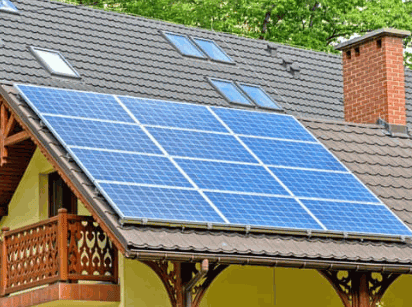
Installing solar panels involves mounting the system on rooftops or open spaces to capture sunlight efficiently. Homeowners can choose to install panels themselves or opt for professional installation services provided by third-party companies.
One method of mounting solar panels is the rooftop installation, where panels are securely attached to the roof using mounting brackets and rails.
After mounting, the panels need to be connected to an inverter, which converts the DC electricity generated by the panels into AC electricity usable in the home.
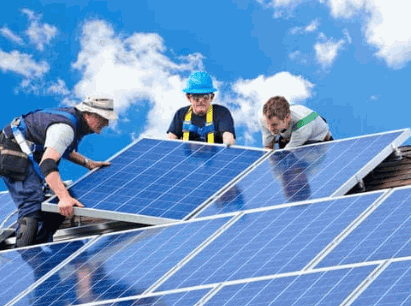
Whilst solar panels offer numerous benefits, there are some drawbacks to consider, such as the initial cost of installation, dependence on weather conditions for energy generation, and space constraints for accommodating the panels.
One of the main concerns with solar panels is the upfront cost of installation. The initial investment can be significant, deterring some homeowners from pursuing solar energy. The effectiveness of solar panels can be affected by weather patterns. Cloudy days or limited sunlight can reduce the energy output, impacting the efficiency of the system.
Addressing these challenges can involve researching financing options or government incentives to offset the installation costs and maximise savings in the long run. Optimizing the placement of panels and considering backup energy sources can help mitigate the impact of weather-related limitations. Exploring innovative solar technologies, like portable or flexible panels, can offer solutions for homeowners with limited space for conventional installations.
The initial cost of installing solar panels can be a significant drawback for homeowners, requiring an upfront investment. Financing options and tax credits are available to help offset the initial expenses and make solar installations more affordable.
One of the main challenges faced by homeowners when considering solar panel installation is the high upfront cost. These initial expenses can deter many individuals from transitioning to solar energy. Nevertheless, various financing options can ease the financial burden. For instance, loans specifically tailored for solar projects offer flexible payment plans, spreading the cost over a longer period. Individuals might qualify for tax credits that incentivize the adoption of renewable energy. These credits can significantly reduce the overall cost of installation and make solar panels a more feasible investment.
Solar panels rely on sunshine to generate electricity, making them somewhat dependent on weather conditions. Variations in sunshine availability due to weather patterns can impact the energy production of solar systems.
Cloud cover, for example, can significantly reduce the amount of sunshine reaching solar panels, thereby lowering their efficiency. Rain or snow can also affect the performance of solar systems by blocking the sunshine needed for electricity generation. On the contrary, clear skies and ample sunshine can optimise the output of solar panels, allowing them to generate more energy. Therefore, it is crucial for solar panel installations to be in regions with high solar irradiation to maximise their productivity.
Solar panels require adequate space for installation, which can be a limitation for homeowners with limited rooftop or land area. Managing surplus electricity generated by the panels also requires additional space considerations.
To overcome the challenges associated with space constraints, homeowners can employ various strategies to optimise the available area for solar panels. One effective approach is the use of solar tracking systems, which allow panels to follow the sun's path throughout the day, maximising energy production without requiring additional space. Considering the orientation and tilt of the panels can significantly impact their efficiency.
To efficiently manage surplus electricity, homeowners can invest in energy storage solutions such as batteries or sell excess power back to the grid through net metering programmes. By carefully planning the installation layout and integrating smart energy management technologies, homeowners can make the most of their limited space while reducing their reliance on traditional power sources.
Storing surplus electricity generated by solar panels often requires battery storage systems, adding to the installation costs and maintenance requirements. Battery storage solutions are essential for ensuring energy reliability during periods of low sunlight.
Battery storage plays a crucial role in modern energy systems by serving as a buffer for the intermittent nature of solar power production. These storage solutions allow households and businesses to store excess energy generated during peak sunlight hours for use during the evenings or cloudy days, thus maximising self-consumption and reducing dependency on the grid. By utilising efficient battery storage systems, users can optimise their energy usage patterns, reduce costs, and contribute to a more sustainable energy landscape. These systems offer backup power capabilities, ensuring uninterrupted supply in case of grid outages or emergencies.